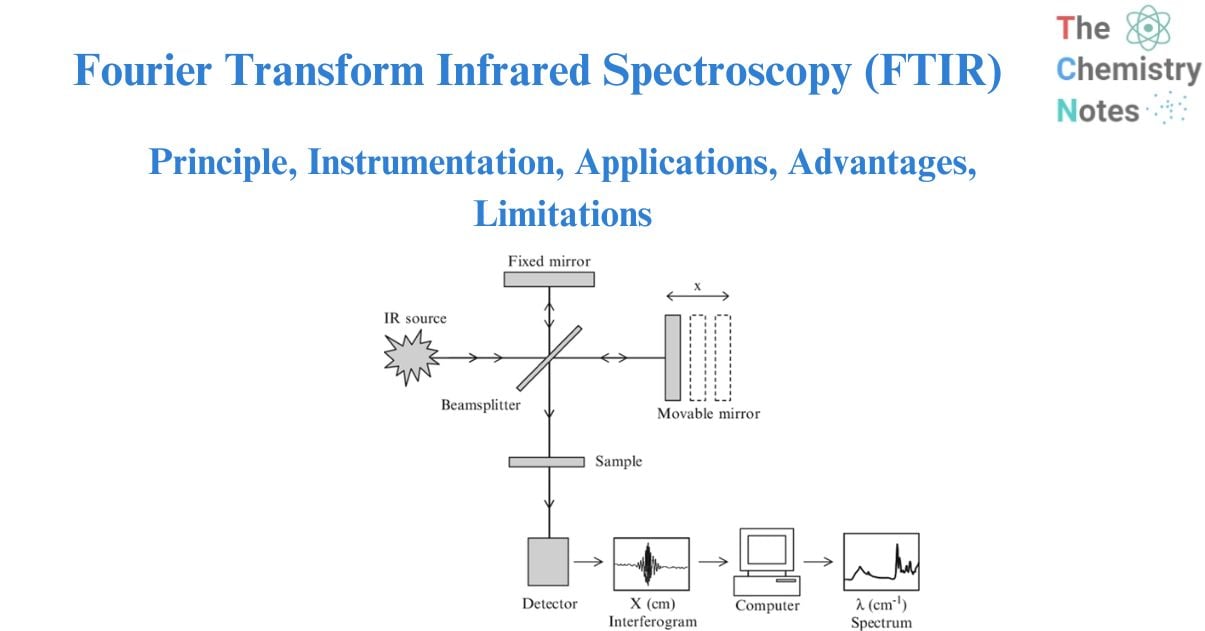


Fourier Transform Infrared (FTIR) spectroscopy is the preferred method of infrared spectroscopy. IR radiation is transmitted through a sample in infrared spectroscopy. The sample absorbs some of the infrared energy, and some of it is transferred (passed through). The resulting spectrum gives the sample a molecular fingerprint by displaying the molecule’s absorption and transmission. No two unique molecule configurations produce the same infrared spectrum, just like fingerprints. As a result, infrared spectroscopy is useful for a variety of analyses.
FTIR (Fourier Transform Infrared Spectrometer) spectrometers are commonly used in organic synthesis, polymer science, petrochemical engineering, the pharmaceutical sector, and food analysis. Furthermore, as FTIR spectrometers can be hyphenated to chromatography, they can be used to explore the mechanism of chemical reactions and the detection of unstable compounds.
Table of Contents
Interesting Science Videos
For almost seventy years, infrared spectroscopy has been an effective technique for materials analysis in the laboratory. An infrared spectrum is a sample’s fingerprint, with absorption peaks corresponding to the frequency of vibrations between the bonds of the atoms that make up the material.
Because each material is a unique atom combination, no two compounds create the same infrared spectrum. As a result, infrared spectroscopy can provide a positive identification (qualitative analysis) of any type of material. Furthermore, the magnitude of the peaks in the spectrum indicates the amount of material present. Infrared is a useful tool for quantitative analysis when combined with modern software algorithms.
Fourier Transform Infrared (FTIR) spectrometry is designed to overcome the limitations of dispersive equipment. The lengthy scanning procedure was a significant constraint. It is preferable to measure all IR frequencies at the same time. The approach employed a basic optical device known as an interferometer to generate a signal that contained all infrared frequencies “embedded” inside it. The signal is normally recorded in a few seconds.
Most interferometers use a beamsplitter, which separates the entering infrared beam into two optical beams. The signal that emerges from the interferometer is the consequence of these two beams “interfering” with one another since one beam has a fixed route and the other’s path is variable due to the movement of its mirror. An interferogram is the resulting signal. All frequencies are thus measured concurrently when the interferogram is measured. As a result of the interferometer’s employment, measurements are exceedingly quick.
The measured interferogram signal cannot be analyzed directly because the analyst requires a frequency spectrum for identification. It is necessary to have a method of “decoding” the individual frequencies. This is possible because of a well-known mathematical technique known as the Fourier transformation.
For numerous reasons, Fourier transforms infrared spectroscopy is favored over dispersive or filter methods of infrared spectral analysis:
• It is a non-destructive procedure.
• It provides a precise measurement method that does not require external calibration
• It can increase speed by collecting a scan every second
The Michelson interferometer consists of a beam splitter, a moving mirror, and a stationary mirror. The beam splitter divides the light beam into two halves, which are reflected by the moving and fixed mirrors before being recombined by the beam splitter.
As the moving mirror makes reciprocating movements, the optical path difference to the fixed mirror changes, causing the phase difference to shift over time. Interference light is created in the Michelson interferometer by recombining the light beams. An interferogram records the intensity of the interference light, with the optical path difference recorded along the horizontal axis.
 Instrumentation of FTIR " width="699" height="492" />
Instrumentation of FTIR " width="699" height="492" />
Image source: https://www.researchgate.net/figure/Schematic-sketch-of-the-essential-features-of-a-Fourier-transform-infrared-FTIR_fig1_225065938
Different parts of FTIR instrumentation include:
The Source: A broadband emitter, such as a mid-IR ceramic source, a far-infrared mercury lamp, or a near-infrared halogen lamp, is used as the light source.
The interferometer, which consists of a beamsplitter, a stationary mirror, and a moving mirror, is the heart of an FTIR spectrometer. The beamsplitter is a semi-transparent mirror that divides a collimated light beam into two optical channels. Half of the light is transferred to the moving mirror and half is reflected to the stationary mirror. The moving and stationary mirrors reflect the two light beams, which are recombined at the beamsplitter before going through the sample chamber and onto the detector.
Depending on the type of analysis being performed, the beam enters the sample compartment and is either transmitted through or reflected off the surface of the sample. This is where certain frequencies of energy that are unique to the sample are absorbed.
FTIR detectors are used to measure and convert the transmitted or reflected light from a sample into an electrical signal. The sensitivity and wavelength range of the data that can be captured is determined by the type and material of the detector.
The detector converts the beam into photons, which are then translated into measurable electric signals that the computer can read. The following are some examples of common detectors:
About Author
Kabita Sharma, a Central Department of Chemistry graduate, is a young enthusiast interested in exploring nature's intricate chemistry. Her focus areas include organic chemistry, drug design, chemical biology, computational chemistry, and natural products. Her goal is to improve the comprehension of chemistry among a diverse audience through writing.
how i can add your reference in my paper? kindly provide your proper reference for this material please ……… Reply